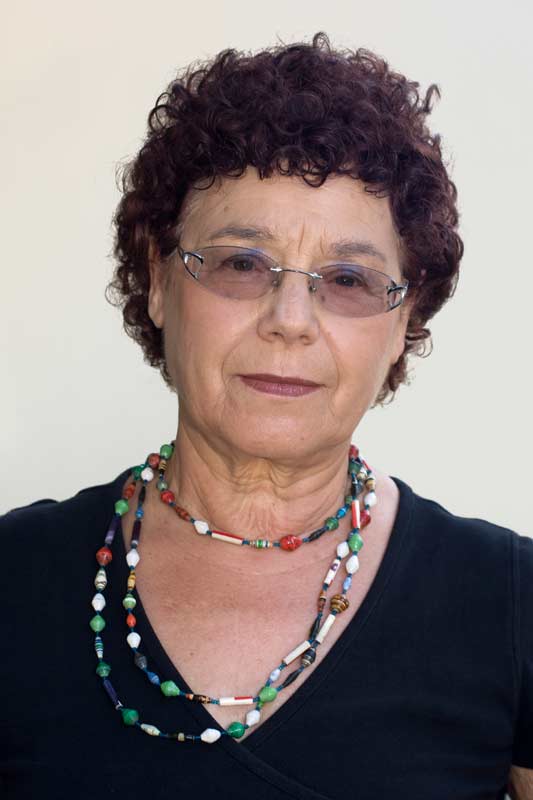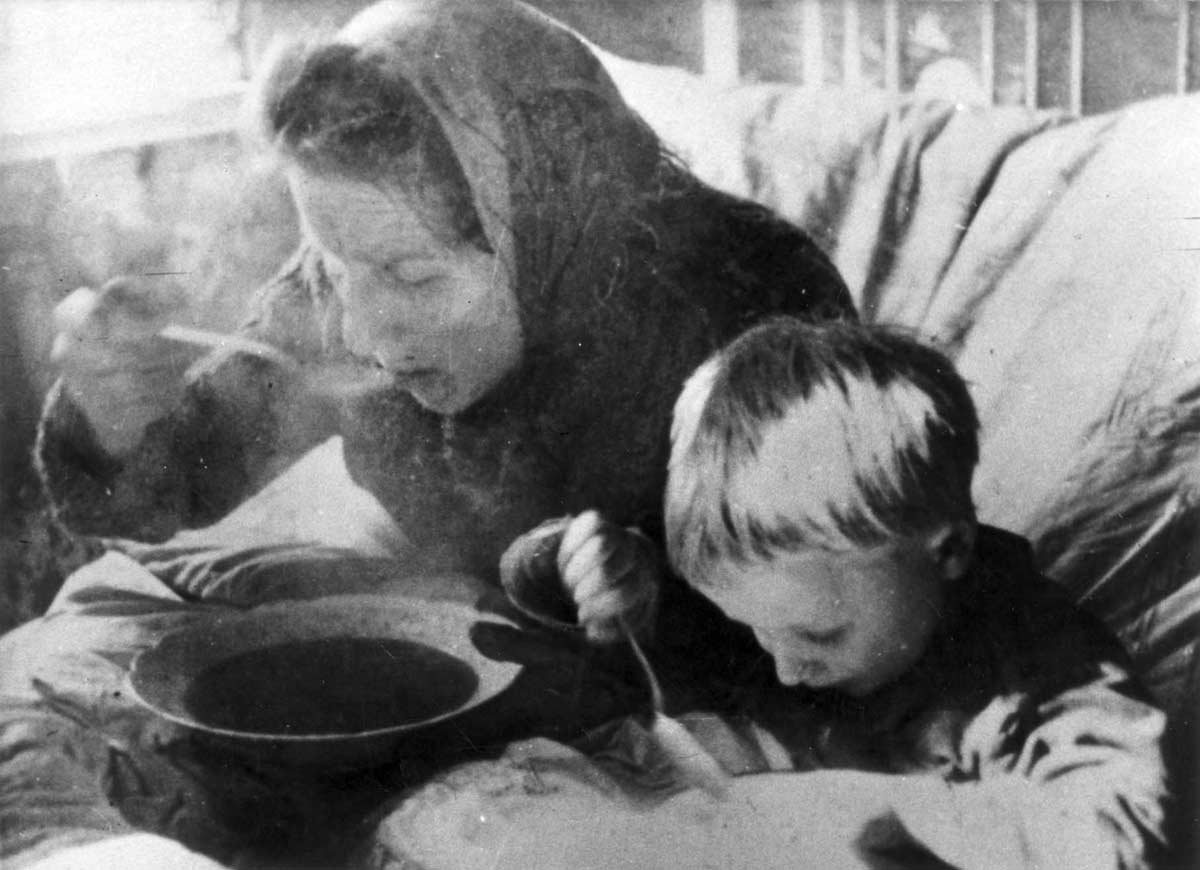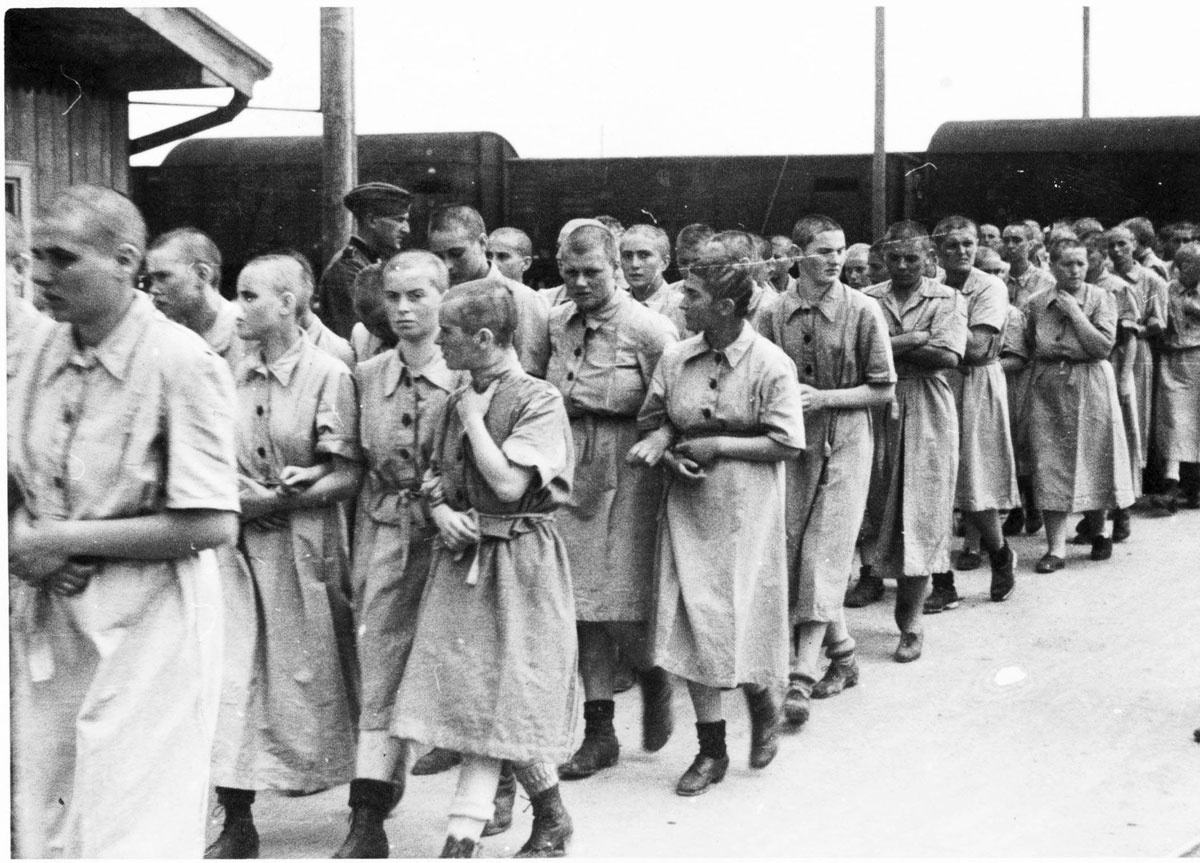Professor Dalia Ofer is a scholar of the Institute of Contemporary Judaism at the Hebrew University in Jerusalem. Many of her studies explore aspects of women and gender during the Holocaust. We met with her to discuss Holocaust studies from a gender perspective, and to address the female experience during the Holocaust.
First off, can you please explain the meaning of historical-gender research and the types of questions it raises?
Historical gender research focuses on a reality characterized by two genders. While it is true that traditionally the male gender ruled over the female gender, this does not mean that women did not play important roles. I am referring to the management of day to day life, economics, taking care of health, raising the family—the very process of demographic growth. In all these areas, women played roles no less important than those played by men. For many years, a mindset which side-lined this central part of the societal and educational development of the individual became the norm; historians, it seems, did not even consider this omission. It was only with the development of the feminist movement that another element was brought to light—feminism was not simply the demand for rights, but also a movement to penetrate intellectual system and their mindsets, calling to read the past differently.
Marion Kaplan, an important American scholar of German Jewry, has studied the German-Jewish transition to bourgeois lifestyle in the last third of the nineteenth century and during the twentieth century.
In her book, The Making of the Jewish Middle Class, she shows how women occupied a vital role in this process—maintaining two sets of values, the values of the Jewish home as well as the values of society. These social changes were the purview of women because men were busy supporting their households. I mention this example because it demonstrates how our entire historical perception of the Jewish bourgeois home is changing. It follows that a much more holistic approach must be adopted if we wish to understand Jewish society. We must incorporate issues of gender into our discussions, understanding that in the value-systems of traditional and modern society at that time the roles of men and women were distinct. It is the task of the historian to take this integrative approach.
The period of the Holocaust is no different in this regard. A historical approach requires an integrative stance to gender roles, especially when we think of history not as a series of wars and leaders, or of intellectual history as simply as the writing of historians or state scientists—but as research which asks questions like: what was the prevailing zeitgeist? What cultural ideas were being created and how did the public respond? If we do not address gender—and thus fail to understand the greater societal, holistic processes taking place—we will not understand historical phenomena.
How do you explain the fact that some oppose an approach to research informed by gender studies?
There are always those who adopt conservative approaches. It is often difficult for people to think differently from the manner they are used to. A considerable number of historians were men, and they saw women as protagonists but not as heroes. Moreover, if we discuss the Holocaust specifically, some worry that if we begin to discuss men and women separately this will raise the question: “who suffered more?” This would relativize the experience of the Holocaust. When one introduces a new element into scholarship, it tends to be emphasized more. This has filled many historians with anxiety; they fear that men will suddenly cease to be part of the discussion. Today, however, most historians understand that integrative approaches provide a deeper and more profound understanding of the social reality that was. If we do not introduce this element into our scholarship, we will certainly fail to understand the deep developments that took place in Jewish life in the time of the Holocaust in the ghettos and in the camps.
In what areas of life did women participate?
Contemporary and later accounts discuss the role of mothers in allocating food to their families. In the Jewish family, the wife played a central role in all matters related to food and the management of the household. Today, it is somewhat difficult for us to understand this; we live in a time where food scarcity is not a serious problem for most people living around us. However, there was a time when providing food for one’s family and children, the challenge of making due with what was available, was no simple task. This was a key role closely associated with women. During the Holocaust the issue of food posed a difficult and severe problem: it meant planning what to feed the family every day, figuring out how to turn potato peels into latkes or carrots into a soup with some degree of nutritional value, and deciding how to split food equally between family members. Women would work all day and come home in the evening. They would then do what they could to turn food scraps into a family meal. I don’t mean a “substantial meal”; a large portion of the Jewish population in the Ghetto starved. I mean they did what they could to alleviate, if but for a time, the pangs of hunger. It was extremely difficult. It is important to note that women were willing to give up their own portions for their children. This theme is prominent in many contemporary accounts: in David Sierakowiak’s diary from the Lodz Ghetto, in accounts from children in orphanages in the Ringelblum archive, and the accounts of Cecilia Slopak who tells of women who would receive food at work, eat from it sparingly, and save the rest for their children at home. This is not to say that women were more heroic then men. It simply means that women employed those qualities with which they had been raised—to support, to give, to share—because this was their traditional family role. They did this naturally, even though they seemed to have hurt themselves in the process.
In your opinion, did this pattern of behavior exact a higher toll from women than from men?
It obviously exacted a toll. I don’t want to say “more than men” or “less than men.” I do, however, think that they paid a different type of price. It was not caused by a mindset of self-sacrifice, or the thought of being more heroic. As I understand it, for women this was normative behavior. This was their role, just as it had been historically, before the war; their responsibility was to feed their families.
Are there examples of women who engaged in other types of activities besides those related to the family?
Without a doubt. For example, many women played important roles in self-help organizations or in the building committees in the Warsaw Ghetto. Ringelblum writes in his diary that after a certain point it was women who ran these committees. Polish Jewry suffered from poverty and many tribulations even before the war. Self-help services were already in place as well as aid from bodies like the JDC. These were women who, though not in charge of these activities, volunteered to work with others on a personal level—visiting needy families. There is a traditional element to this activity—visiting the sick is an important mitzvah in Judaism. But somehow, during this process, it became associated specifically with women. These activities lay beyond the family framework, but again, it was a quality that derived from the socialization of women. I do not think that one can deem this an innate female characteristic, a consequence of the woman’s role of childbirth and nursing. But I do think that the value-system in which these women were raised, and the social context in which they were educated—that is the entire socialization process of women—led to their participation in these activities.
Did any younger women, who were not mothers, also take part in these activities?
One could say so in terms of youth groups. This is another element, supposedly ideologically equal, even though there was no true equality in youth groups. Women held roles just as important as those held by men. During that time, it was far easier for women to disguise themselves as non-Jews than for men. This can be seen primarily in the cases of the kashariyot (couriers), who write about this in their own accounts. These women relied on their ability to operate within the system by virtue of these same female qualities. Bronka Klibanski, a member of the Deror youth group, recounts that one day she was entrusted with moving a large basket full of weapon parts covered with meat; it was forbidden to carry meat from the city via train. Because she looked Aryan, she was able to disguise herself as a village girl. When she came back from Bialystok, the soldiers stopped her, but she was able escape unharmed because she knew how to talk to them. This was something else; there were clear roles which were taken on by women.
Are there examples of women in leadership roles? In senior positions?
Without a doubt. Chajka Kalinger or Vitka Kovner, are examples of women who took on very important roles.
How did women cope with the conditions in the concentration camps?
In concentration camps women had it just as difficult as men. However, women developed a variety of strategies to join together and help one another. In her memoirs, Italian Juliana Tesdkishe recounts how she forged a partnership with a younger French girl, based on their common foreignness within the Polish environment of Auschwitz. She describes how the two developed a fascinating mother-daughter relationship, and explains how they helped each other. At the same time, Juliana had her own daughters who were in hiding with an Italian family. There is an extensive branch of research which studies "surrogate families.”
Is this type of connection more characteristic of women?
I think this kind of connection was more characteristic of women even though men, such as Primo Levi and others, also reported the phenomenon. Some studies argue that it is more characteristic of women, but one should, in my opinion, be very careful not to reach the conclusion that this made it easier for women. It was difficult for all the camp inmates and in some respects, it was even harder for women. For example, having their hair shaved off, divesting them of a significant part of female beauty and identity, or stripping them naked in front of men at the entrance to the camp, a terrible shock and an unbearable humiliation. Some women remained close to their children as much as possible, even though we know that the more veteran Polish inmates in the camps told the women to leave children in the hands of their grandmothers and take care of themselves. Here we once again encounter the issue of traditional roles — it is the woman who is attached to her children. This obviously does not mean that fathers did not love their children or have a relationship with them. But women had a unique and different kind of relationship with their children. These complex issues and processes of socialization pop up in all kinds of places.
In your opinion, did these qualities also find expression after the war, in the Displaced Persons camps?
Everyone was deeply occupied with mourning in the DP camps. But yes, women had their own specific challenges. For example, when we reach maturity and are ready to get married we have a role model, usually our mother or another female figure in our family. But many young women in the camps, who had been separated from their families and saved in some way or another, had no model. This was something very difficult for a woman. In addition, the need for human connection was extremely important, not just for women but for men as well. This explains the many marriages which took place in the DP camps. Many of the survivors, men and women, felt responsible for perpetuating their family and its memory.
For women, fertility and birth were obviously areas of life that gave them the will to carry on. But again, this was very difficult, and many women lacked any kind of knowledge on the subject because, as I mentioned, they had no role model. In addition, there were adult women who had lost their families and remarried who experienced a whole other set of problems. Often this rebuilding was attended by emotions of guilt: “why was I saved?” But this was true for men as well. We see that while women maintained their roles from the past, they also did things which opposed this past—for example, women as fighters. They had not been raised to be fighters. But experiencing the expulsion or murder of someone in their family could provoke a shift. Two things happened at once, continuity but with an element of rupture.
Do you think there is a distinction between “male” heroism and “female” heroism?
Yes. Some women adopted fighting roles, taking on the mantle of masculine heroism. But there are obviously stories of women who adopted another form of heroism—resilience and the ability to survive. As we mentioned earlier, for women it was easier to hide within Aryan society and therefore we see many cases of women smugglers.
What other avenues of research should be pursued in the future, in your opinion?
The entire subject of the social history of Jews in the ghettos—aspects of family, youth, education and companionship—has yet to be studied in any kind of depth. These are very important subjects. Any study of social or cultural history must address issues of gender, but this should not just focus on women. Today we have reached a stage where integration is possible; it is possible to see the entire holistic framework.









